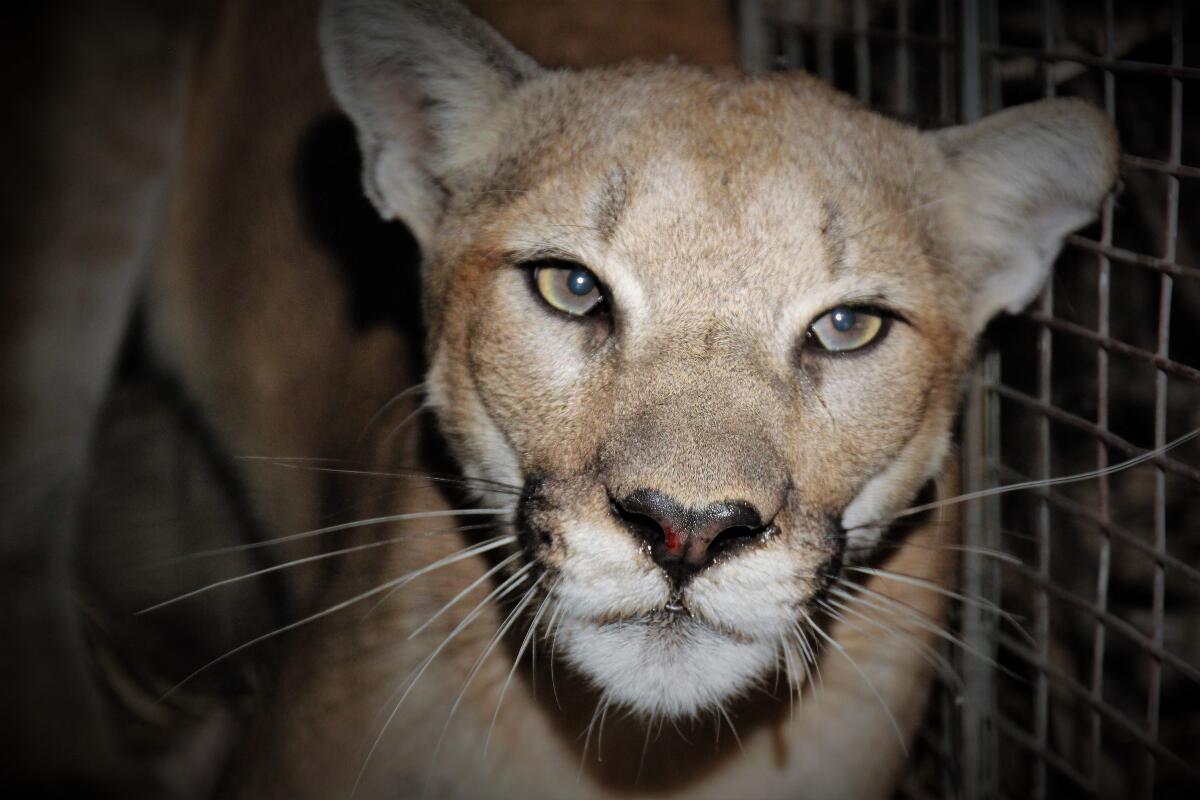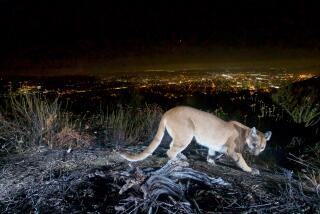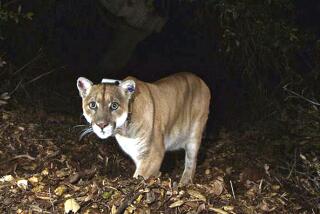âStunningâ: Female mountain lion is 99th to be tracked in Santa Monica Mountains study

The National Park Service has captured its 99th mountain lion for an ongoing study of the community of big cats living in the Santa Monica Mountains.
Dubbed P-99, the female cat is an estimated 2 to 3 years old and was found in the western part of the Santa Monica Mountains, park service officials said.
For the record:
2:09 p.m. Oct. 19, 2021A previous version of this article said the National Park Service study on mountain lions in the Santa Monica Mountains did not include Simi Hills and beyond. The study includes animals in Simi Hills, Griffith Park and other areas.
After her capture on Sept. 8, the young mountain lion was given a âfull workup,â which entailed taking measurements, collecting biological samples, conducting a physical exam and outfitting her with a GPS radio collar, according to an Instagram post by the park service that included a photo of the big cat.
Social media users fawned over the cougar, calling her âstunningâ and âgorgeous,â with one noting: âThose eyes.â Several local lions have gained celebrity status, including P-22, a headline-grabber who has shacked up in Griffith Park.
The lion slinks through the chaparral, a blur of movement in the night.
P-99 is now part of a study launched by the National Park Service in 2002 to understand how the cougars living in and near the Santa Monica Mountains survive in an urban environment hemmed in by treacherous freeways and urban development.
Officials are currently tracking 13 mountain lions with GPS collars in the region.
While the pumasâ population size remains elusive, itâs believed the Santa Monica Mountains can support 10 to 15 mountain lions at a time, excluding kittens, âbecause they need prey, they need their territory and the males typically really require quite a bit of spaceâ â between 150 and 200 square miles, said Ana Beatriz Cholo, a public affairs officer for the Santa Monica Mountains National Recreation Area.
Many of the lions that have been part of the nearly two-decade study have died, but their legacy lives on in valuable information gleaned by biologists and others who track the big cats.
âWeâve learned so much,â said Cholo, noting that research from the study provided the basis for a planned wildlife bridge over the 101 Freeway in Agoura Hills, which is intended to allow the mountain lions to forge into new territory and seek genetically dissimilar mates while avoiding whizzing cars on the busy roadway. The California Department of Transportation expects to break ground on the $87-million bridge at Liberty Crossing early next year.
Architect Robert Rock is designing a bridge over the 101 Freeway in Agoura Hills that will stop mountain lions from becoming roadkill.
Unable to disperse into new areas because of their fragmented habitat, the mountain lion population has been beset by significant inbreeding, officials said.
Genetic analyses found that lions in the Santa Monica Mountains, along with another isolated population in the Santa Ana Mountains south of Los Angeles âhave the lowest levels of genetic diversity ever documented in the West,â the National Park Service said.
The only population with lower genetic diversity was observed in South Florida in the mid-1990s, when that stateâs panther population was heading toward extinction, according to the park service.
Scientists believe the extensive inbreeding is beginning to manifest as physical abnormalities. In March 2020, a mountain lion known as P-81 was discovered with a kinked, L-shaped tail and only one descended testicle. And there have been sightings of other mountain lions with visible abnormalities, Cholo said.
Jeff Sikich, a wildlife biologist with the National Park Service, called it a âgrave discoveryâ at the time, adding that it âunderscores the need for measures to better support this population.â
Still, itâs not all doom and gloom with the cougars.
Last summer was a boom year for kittens, with 13 born to five mountain lion mothers between May and August in the Santa Monica Mountains and Simi Hills. (Yes, there are photos and they are as cute as youâd expect.)
Labeling it a âsummer of kittens,â parks officials said it was first time that many lion dens had been found over such a brief period of time during the study years.
More to Read
Sign up for Essential California
The most important California stories and recommendations in your inbox every morning.
You may occasionally receive promotional content from the Los Angeles Times.












